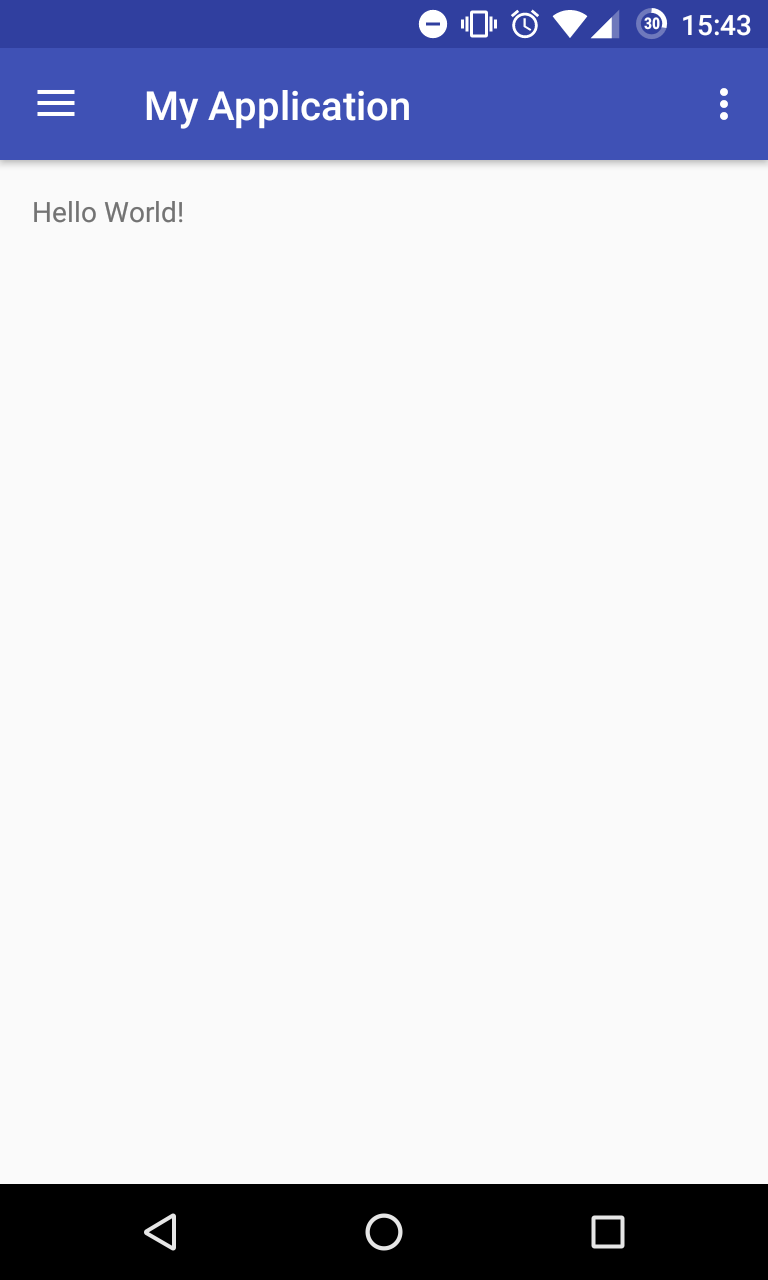为了用anko DSL测试kotlin我决定在最后一个
android studio ide(2.1.3)中使用kotlin插件(1.0.3)和最新的anko库(0.9)开始一个新的proyect
我使用默认的proyect Navigation Drawer Activity,所以我只需要将主xml转换为anko.
这是xml:
xmlns:android="http://schemas.android.com/apk/res/android"
xmlns:app="http://schemas.android.com/apk/res-auto"
xmlns:tools="http://schemas.android.com/tools"
android:id="@+id/drawer_layout"
android:layout_width="match_parent"
android:layout_height="match_parent"
android:fitsSystemWindows="true"
tools:openDrawer="start">
xmlns:android="http://schemas.android.com/apk/res/android"
xmlns:app="http://schemas.android.com/apk/res-auto"
xmlns:tools="http://schemas.android.com/tools"
android:layout_width="match_parent"
android:layout_height="match_parent" >
android:layout_height="wrap_content"
android:layout_width="match_parent"
android:theme="@style/AppTheme.AppBarOverlay">
android:id="@+id/toolbar"
android:layout_width="match_parent"
android:layout_height="?attr/actionBarSize"
android:background="?attr/colorPrimary"
app:popupTheme="@style/AppTheme.PopupOverlay" />
xmlns:android="http://schemas.android.com/apk/res/android"
xmlns:tools="http://schemas.android.com/tools"
xmlns:app="http://schemas.android.com/apk/res-auto"
android:layout_width="match_parent"
android:layout_height="match_parent"
android:paddingLeft="@dimen/activity_horizontal_margin"
android:paddingRight="@dimen/activity_horizontal_margin"
android:paddingTop="@dimen/activity_vertical_margin"
android:paddingBottom="@dimen/activity_vertical_margin"
app:layout_behavior="@string/appbar_scrolling_view_behavior" >
android:text="Hello World!"
android:layout_width="wrap_content"
android:layout_height="wrap_content" />
android:id="@+id/nav_view"
android:layout_width="wrap_content"
android:layout_height="match_parent"
android:layout_gravity="start"
android:fitsSystemWindows="true"
app:headerLayout="@layout/nav_header_main"
app:menu="@menu/activity_main_drawer" />
正如你在这里看到的那样,它工作得很好:

使用anko,我尝试从xml复制每个细节,获取此代码:
class MainActivityUi: AnkoComponent {
override fun createView(ui: AnkoContext) = with(ui) {
drawerLayout {
id = R.id.drawer_layout
fitsSystemWindows = true
coordinatorLayout {
appBarLayout(R.style.AppTheme_AppBarOverlay) {
toolbar {
id = R.id.toolbar
backgroundColor = colorAttr(R.attr.colorPrimary)
popupTheme = R.style.AppTheme_PopupOverlay
}.lparams(height=dimenAttr(R.attr.actionBarSize),width=matchParent)
}.lparams(width=matchParent)
relativeLayout {
padding = dip(16)
textView("Hello World!")
}.lparams(height=matchParent,width=matchParent) {
behavior = AppBarLayout.ScrollingViewBehavior()
}
}.lparams(height=matchParent,width=matchParent)
navigationView {
id = R.id.nav_view
inflateHeaderView(R.layout.nav_header_main)
inflateMenu(R.menu.activity_main_drawer)
}.lparams(height=matchParent) {
gravity = Gravity.START
fitsSystemWindows = true
}
}
}
}
相反,我得到了这个白色状态栏:
我做的唯一更改是在MainActivity中将setContentView(R.layout.activity_main)更改为MainActivityUi.setContentView(this).
所以,我的问题是,当它们是相同的视图和布局时,为什么会发生这种情况?我该如何解决这个问题?
编辑:我正在使用在Android Studio中创建的默认项目,您选择新的项目,然后选择DrawerNavigationActivity.如果在setContentView中我选择显示xml的视图,状态栏是蓝色的(第一个屏幕截图),但如果我选择显示anko的视图,我会得到白色状态栏.
在这两种情况下,我使用相同的主题,颜色等,当使用xml布局时,一切都运行完美,所以它必须是一个anko的问题
(多进程))













)




